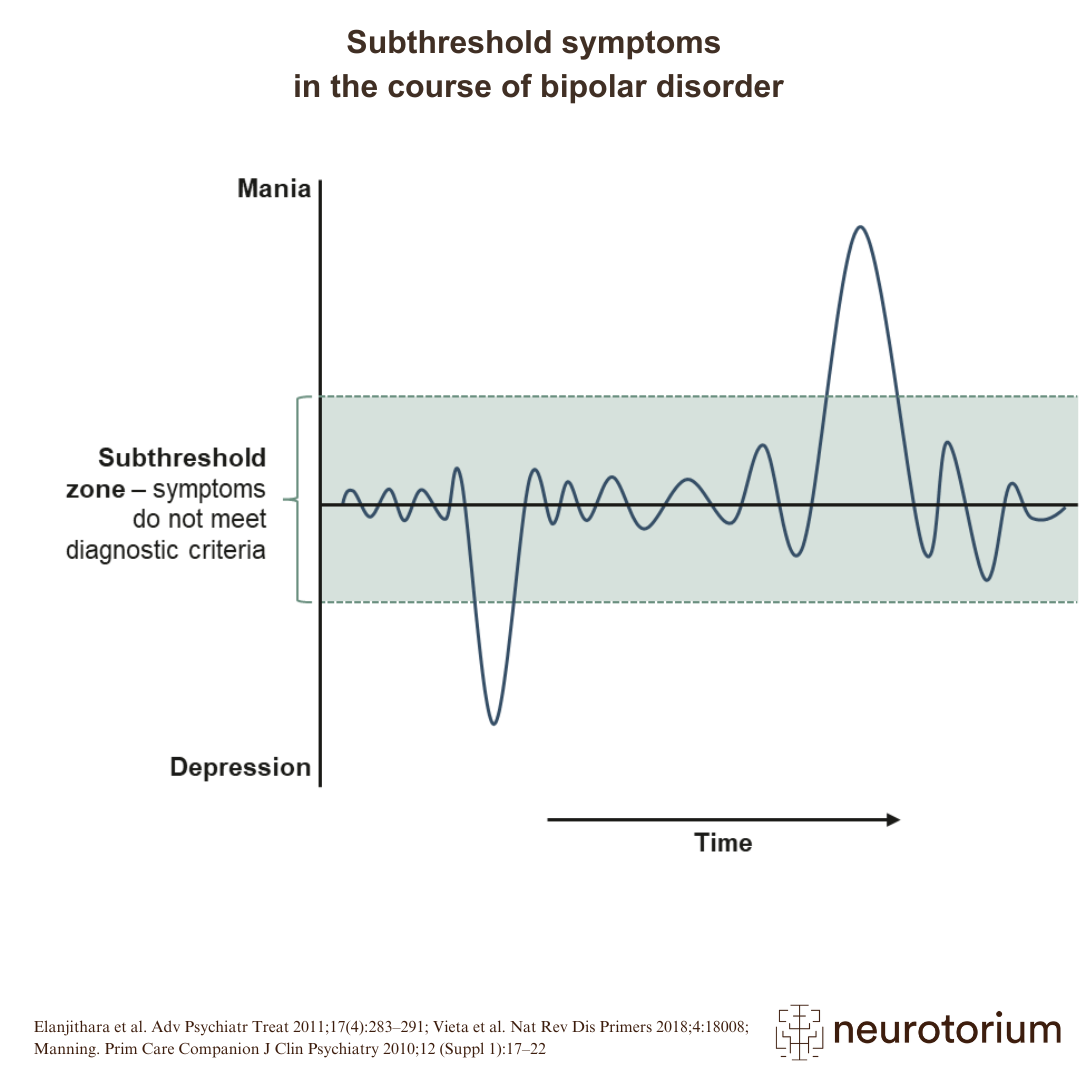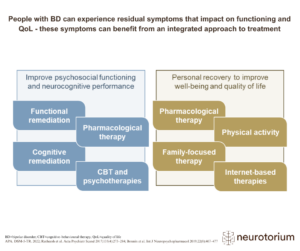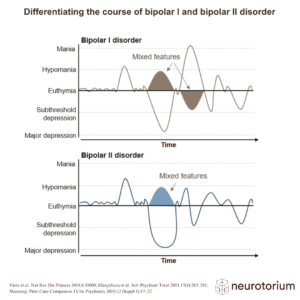The DSM-5-TR acknowledges subthreshold bipolar conditions (cyclothymia, other specified bipolar and related disorders), reducing the number of individuals formerly categorized as ‘not otherwise specified’.1
Examples of presentations that can be specified using the ‘other specified bipolar and related disorder’ include:1
- short-duration hypomanic episodes (2–3 days)
- hypomanic episodes with insufficient symptoms and major depressive episodes
- hypomanic episode without prior major depressive episode
- short-duration cyclothymia (<24 months)
- manic episode superimposed on schizophrenia, schizophreniform disorder, delusional disorder, or other specified and unspecified schizophrenia spectrum and other psychotic disorder.





